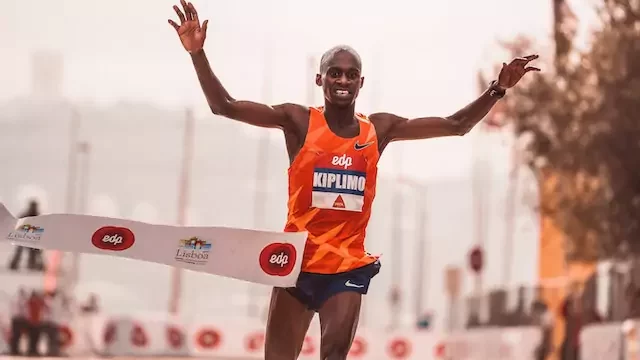Running is a great way to lose weight. It’s a high-intensity exercise that burns a lot of calories, and it can also help to improve your cardiovascular health and build muscle. However, it’s important to know how to do it safely and effectively, especially if you’re new to running.
This guide will cover everything you need to know about running for weight loss, from getting started to creating a training plan to tracking your progress. You’ll also learn about the benefits of running for weight loss and get some tips for success.

History of Running: From Ancient Times to the Present Day
Running has been used for transportation, hunting, and warfare for thousands of years. The earliest evidence of running can be found in prehistoric cave paintings, which show people running for both practical and ritualistic purposes.
In the ancient world, running was a popular sport and pastime. The ancient Greeks and Romans held regular running races, and running was also a part of military training. The first recorded Olympic Games in 776 BCE included a running race called the stadion race, which was approximately 200 meters long.
Running in the Middle Ages and Renaissance**
After the fall of the Roman Empire, running declined in popularity for several centuries. However, it began to regain popularity in the Middle Ages and Renaissance, as people became more interested in sports and fitness. In the 14th century, for example, the English king Edward III created a royal footrace.
Running in the Modern Era
Running continued to grow in popularity in the 19th century, and by the 1970s, it had become one of the most popular sports in the world. This was due in part to the rise of marathons and other long-distance running races. The first modern marathon was held in London in 1896, and the first Boston Marathon was held in 1897.
Here are some of the key milestones in the history of running:
- 776 BCE: The first recorded Olympic Games are held in ancient Greece, and the stadion race is included as one of the events.
- 490 BCE: The Greek soldier Pheidippides is said to have run from Marathon to Athens to deliver news of a victory over the Persians. This is the origin of the modern marathon race.
- 1896: The first modern Olympic Games are held in Athens, Greece, and the marathon race is included as one of the events.
- 1897: The first Boston Marathon is held.
- 1908: The marathon distance is standardized at 26.2 miles.
- 1970s: Running becomes one of the most popular sports in the world.
- 1984: The first women’s marathon is held at the Olympic Games.
Running has evolved over the centuries, but it remains one of the simplest and most effective forms of exercise. It is a great way to improve cardiovascular health, build muscle, and lose weight. It is also a fun and challenging sport that can be enjoyed by people of all ages and fitness levels.
How Running Helps You Lose Weight
Running is a great way to lose weight because it burns a lot of calories. The exact number of calories you burn will depend on your weight, pace, and distance, but most people burn around 100 calories per mile.
Running also helps to improve your cardiovascular health and build muscle. Cardiovascular health is important for overall health and well-being, and muscle mass helps to boost metabolism and burn more calories, even at rest.
Different Types of Running Races
Distance-Based Races
- Fun runs: Fun runs are typically short (1-5 miles) and non-competitive races that are designed for people of all ages and fitness levels. Fun runs are a great way to get started with running or to participate in a race with friends and family.
- 5K races: 5K races are 3.1 miles long and are one of the most popular types of running races. 5K races are a great choice for beginners and experienced runners alike.
- 10K races: 10K races are 6.2 miles long and are a bit more challenging than 5K races. 10K races are a good choice for runners who are looking for a challenge but don’t want to commit to a half marathon or marathon.
- Half marathons: Half marathons are 13.1 miles long and are a popular choice for runners who are looking for a challenge. Half marathons are a good stepping stone to a full marathon.
- Marathons: Marathons are 26.2 miles long and are the most challenging type of running race. Marathons are a great accomplishment for runners of all levels.
- Ultramarathons: Ultramarathons are any race that is longer than a marathon. Ultramarathons can be anywhere from 31 miles to hundreds of miles long. Ultramarathons are a challenge for even the most experienced runners.

Other Types of Running Races
- Trail races: Trail races are run on off-road trails, such as through forests or mountains. Trail races can be more challenging than road races due to the uneven terrain and obstacles.
- Obstacle course races: Obstacle course races are races that include obstacles, such as mud pits, walls, and ropes. Obstacle course races are a fun and challenging way to get a workout.
- Themed races: Themed races are races that have a specific theme, such as a color run or a zombie run. Themed races are a fun way to participate in a race with friends and family.
Choosing a Running Race
When choosing a running race, it is important to consider your fitness level, experience, and goals. If you are new to running, start with a shorter race, such as a 5K or fun run. As you get fitter and more experienced, you can gradually increase the distance of the races you run.
If you have a specific goal, such as running a marathon, you should choose a training program that is designed for that distance. There are many different training programs available online and in books.
No matter what type of running race you choose, make sure to train properly and listen to your body. Running should be enjoyable, so choose a race that you are excited about and that you think you can finish.
Getting Started with Running
If you’re new to running, it’s important to start slowly and gradually increase your mileage and intensity over time. A good rule of thumb is to start by running for 20-30 minutes at a comfortable pace three times per week.
As you get fitter, you can increase the duration and intensity of your runs. You can also try running on different surfaces, such as trails or hills, to add variety to your workouts.
Creating a Running Plan
Having a running plan can help you to stay motivated and track your progress. Your plan should include your goals, your mileage goals, and the types of workouts you’ll be doing.
If you’re not sure how to create a running plan, there are many resources available online and in books. You can also consult with a running coach or personal trainer.
Tracking Your Progress
It’s important to track your progress so that you can see how far you’ve come and stay motivated. You can track your mileage, time, and pace using a running app, GPS watch, or simply by writing it down in a journal.
Tips for Running Success
Here are a few tips for running success:
- Start slowly and gradually increase your mileage and intensity over time.
- Listen to your body and don’t push yourself too hard.
- Wear proper running shoes and clothing.
- Stay hydrated and eat a healthy diet.
- Find a running partner or join a running club to stay motivated.
Benefits of Running for Weight Loss
Running offers a number of benefits for weight loss, including:
- It burns a lot of calories.
- It helps to improve cardiovascular health.
- It helps to build muscle.
- It boosts metabolism.
- It reduces stress.
- It improves sleep quality.
FAQs
How often should I run to lose weight?
Aim to run three to five times per week. If you’re new to running, start with three times per week and gradually increase the frequency as you get fitter.
How long should I run to lose weight?
Start by running for 20-30 minutes at a comfortable pace. As you get fitter, you can increase the duration of your runs. A good goal is to run for at least 30 minutes each time you go out.
What should I eat before and after running?
Before running, eat a light meal or snack that is high in carbohydrates and low in fat. After running, eat a meal or snack that contains protein and carbohydrates to help your body recover.
What should I do if I’m injured?
If you’re injured, stop running and rest until you’ve recovered. If the injury is severe, see a doctor or physical therapist.




